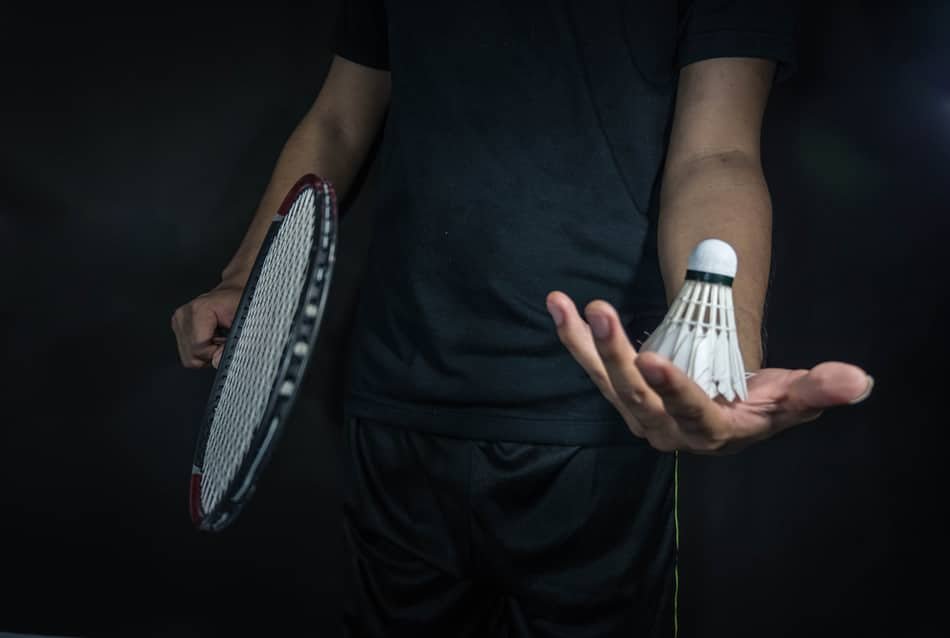
Badminton, which you probably have a problem pronouncing, traces its origin to British India. Surprisingly, badminton is the second most popular sport in the world; soccer being the most popular. Yet, it is not popular in the United States when compared to Asia and some parts of Europe.
In most cases, Americans only play badminton during social events and mainly for fun, not fortune or fame. In this extensive post, we will discuss the top reasons why badminton is not popular in America.
1. Badminton is perceived as a weak sport.
A greater percentage of average Americans are ignorant about badminton. Compared to tennis, badminton is, to a large extent, underrated. Many still perceive it as a niche sport and mostly limited to a few Asian and European countries. But the truth is that badminton requires hard work, skills, strength, agility, and stamina. In fact, Badminton is as tough as tennis or other physical sports.
Because badminton birdies are substantially lighter than tennis balls, many people assume that the lightweight ball makes the game unpredictable, and to some extent covert athletes into lightweights. Even with all sophistication and skills that the sport requires, many people give little attention. Only if these people recognize badminton for what it really is, and then they might develop affection towards it.
2. Badminton is perceived as a backyard sport.

Most Americans play badminton in their gardens giving it a different impression of how badminton should be played. Most of these people see it as just as any other family-friendly entertainment game. In short, the sport is just like any other hide-and-seek adventure. With such kind of attitude, it is unlikely that most people will pursue it professionally. People are yet to realize that badminton is a certified phenomenon in sports circles.
Ironically, the game has not always been viewed this way. In the early 20th century, badminton was enthralled in America. Badminton was a popular sport in the 1930s owing to support offered by YMCAs, hundreds of newly formed sports clubs, and education institutions. This popularity continued beyond the 1940s. In fact, the United States badminton teams won major competitions between 1949 and 1976. Its top stars graced top sports magazines while badminton comedy shows toured every corner of the country, but now that remains past glory.
Badminton suffered image problems in the late 1970s when people started playing it in picnic parks or their backyards. So far, it has not regained its previous glory.
3. Lack of support from media and sponsors.
Promotion plays a critical role in the development of sports. This explains the reasons why some games such as basketball or football are more popular than volleyball, for instance. Media attention and sponsorship for badminton (globally) cannot be compared even to tennis, leave alone football.
Media, specifically American Media, give limited coverage to badminton sport. If you were really interested in the news about this sport, you would have to dig deep and wide to get any live streaming of a badminton game. Even international media, rarely give badminton enough airtime. BBC Sport admitted that they rarely give airtime to niche sports (badminton included) beyond the Olympic window. According to Roger Mosey from BBC, the limited coverage was driven by the fact that a majority of viewers were only interested in the sport during such tournaments.
The limited coverage will dent the chances of badminton getting major sponsors. Obviously, limited media coverage means less exposure for sponsors, which means fewer sponsorships deals. It will be hard for top players to keep up the game if they cannot get highly rewarding endorsements. Perhaps, badminton will only grow and gain a following if more resources are channeled into the promotion of the sport.

4. Lack of structures that support growth and small talent pool.
America has a smaller pool of talent of skilled players when compared to other countries like China where the sport is popular. China, specifically, loves the dominance of the game, and for this reason, they have established a robust program to develop players from a young age, and they support them through all stages until they are ready for international competition. Young players are sourced from various parts of the country to join the national team. Before participating in major competitions, these players participate in several internal competitions. Sometimes, they play against each other until they are ready for international tournaments.
Likewise, many other countries in Asia identify talent at a very young age, train and nurture them before participating in major competitions. In most cases, these trainers play in professionals courts. By contrast, America relies on a small pool of talent. Figures from Statista show that the growth of badminton participants in the US has either remain stagnant or even decline in some instances. Without a proper badminton development program that identifies talent from a young age, America will continue trailing these Asian badminton giants.
5. America has not won major medals.
American culture toward sports is that a specific sport will only become popular if Americans are excelling at it. That is when it will receive media attention. Unfortunately, American has not been excelling at badminton in the recent past. Tennis is still the most popular racquet sport in the US. Because of this, tennis draws the attention of young talents who could be venturing into badminton.
Young people rarely dream of being badminton stars. Unlike tennis, which has several start athletes such as Serena Williams, Andre Agassi, and Pete Sampras, badminton doesn’t have star athletes. Legendary athletes help to create exposure and inspire the young generation to pursue the sport.

Though there are few good badminton players in America, the country is not dominating or consistently winning titles in major international events. The fact that most American badminton players struggle to pass through the first round has dented the interest of young people who could compete in these competitions. This has left many sports fans leaning towards other sports such as swimming and tracks event that give them a proud moment to be Americans.
Naturally, American fans will not love to witness their teams being beating in each successive competition. Unless America becomes more competitive and wins medals in major games, then average Americans will be less interested in the sport.
6. Lack of government support.
The government and other badminton sports stakeholders have not done enough to encourage more people to watch it on TV, attend live events, actively take part in sports, talk about it on social media, or even entice the public through educational scholarships for badminton players. As a result, badminton has remained just a pastime game. Lack of fantasy leagues doesn’t help the situation either. In the US, badminton is not one of those games that can bring the nation to a halt whenever the game is played.
The only time badminton gets serious attention is when there is a big international tournament such as the Olympics. Even then, only a couple of countries dominate the competition. Most of these countries such as Indonesia, Malaysia, China, India, and a couple of European states have put in place infrastructure from the school level up to professional leagues.

Iris Wang, a promising young badminton player from California once told USA Today that Badminton in the US is still self-funded. There is nothing like teams. He was making his observation in relation to the South Korea badminton team. Wang observed that South Koreans play and train together. According to Wang, American players are struggling to make it on their own. Badminton players and teams from South Korea and China seem to be well resourced.
Most of these Asia Badminton giants subsidize their badminton programs. By contrast, American players often pay for their practice, coaching, and equipment from their pockets.
7. Most people already love tennis, which seems to have a strong community support base.
While badminton is the fastest racquet sport, tennis takes all the glory (at least in America). People had already developed a strong liking for tennis when badminton came along. Perhaps, Americans didn’t see the need to follow two – almost similar – racquet games.
While players understand the big difference that exists between these two racquet sports, most people only see them as games that involve hitting things back and forth. It is, therefore, common for most people to lump them together. But, in the real sense, badminton players run and hit the birdie almost as twice as much as tennis players.
Unlike tennis, badminton in America does not have a huge support community. Despite their similarity, tennis’s significant impact on the community has seen it develop stronger ties when compared to badminton’s.

8. Low compensation for badminton athletes.
The salary for badminton athletes is significantly lower when compared to their tennis and football counterparts; wages for star athletes like Datuk Lee Chong Wei is way lower than salaries for basketball, tennis, or football stars. For example, Chong took home only $15,000 after winning a Super Series Title. In contrast, tennis stars such as Serena Williams, Roger Federer, Venus Williams, or Andy Murray make more millions from various tournaments each year.
For instance, the 2018 French Open Final had record $2.6 million prize money. Likewise, the winner of the 2018 Wimbledon Championships took home a hefty paycheck of $3.3 million. Sure, the few thousand dollars that badminton players get is nothing close to the tennis prize money, and this is discouragement within the badminton community
9. Increasing interest in esports.
Today, more young people are drawn to internet games than regular sports. As a result, they pay less interest in sports like badminton. Most of these young sports stars, who could be future badminton stars, are channeling their energy to esports. They start as casual gamers, but with time they develop into hardcore gamers.
The increasing popularity of esports has disrupted the sports industry. With the growing popularity of esports and the growth of internet connectivity, esports has slowly become mainstream sports. Plus, esports competitions often have huge prizes. This means niche sports such as badminton will take a back seat. More sponsors are getting into esports while reducing their spending on other types of sports
10. Lack of support from a family level.

Those who embrace badminton in the US can be linked to direct family support. Most young people pursue these sports because their parents or someone in the family is a badminton fan or professional player. Some people only understand the seriousness of the game if they have a friend who is into badminton.
However, for prospective players from families who see the game as just a hobby, things are different. If you were to tell your friends or family members that you are a badminton player, they are more likely to take you less seriously. In some cases, they may even tease or laugh at you. This could be an indication of the lack of role models who could inspire young players to work hard in the game.
Taking everything into account
If you still had doubts about why badminton had such low popularity in America, the above should shed more light. Badminton may not be popular in the US as it should be, but it has a rich history. While it may take time to recover the lost glory, the country could love the game again if Americans take the game more seriously, invest more resources in talent development, and encourage more stakeholders to invest and give badminton more exposure.
